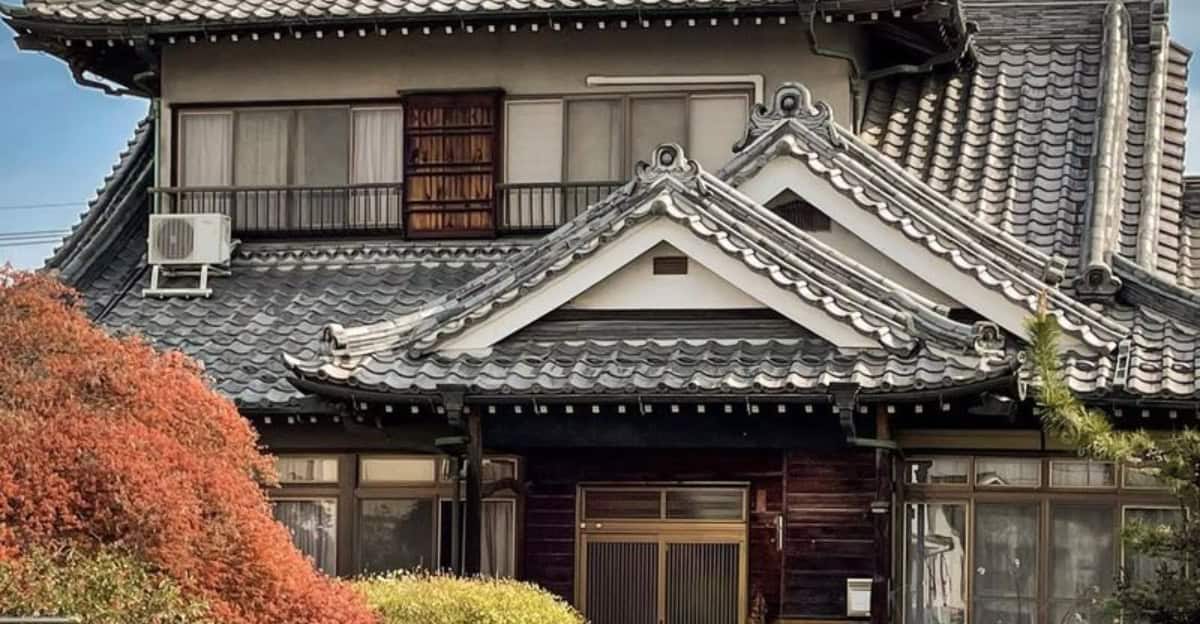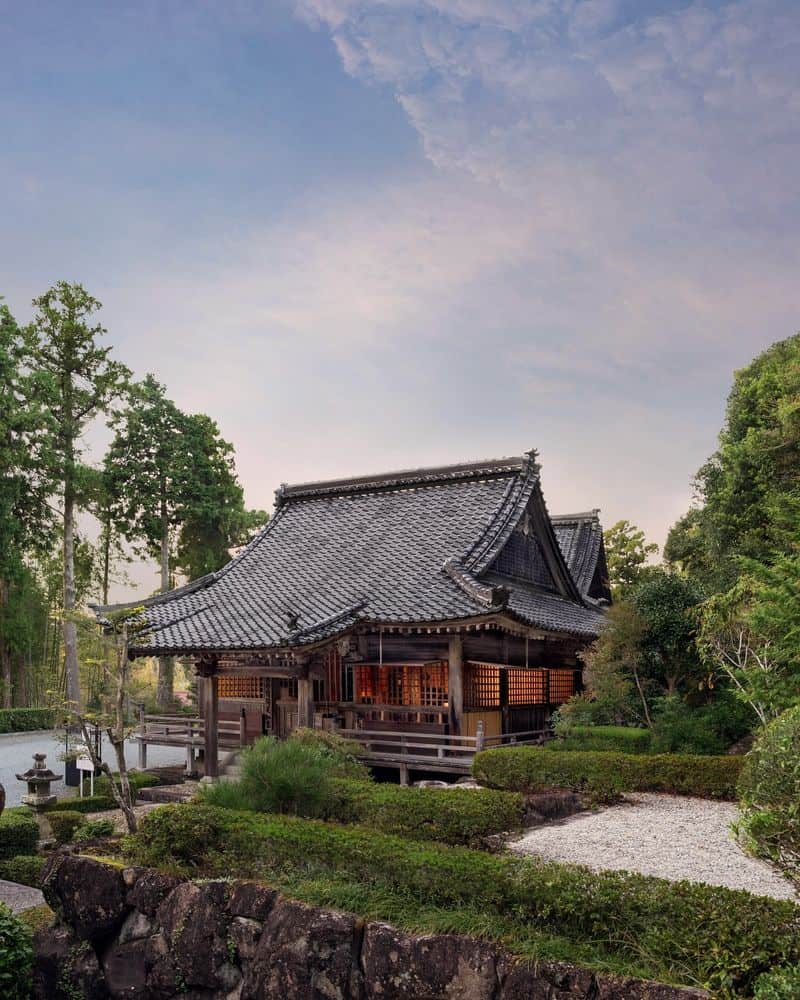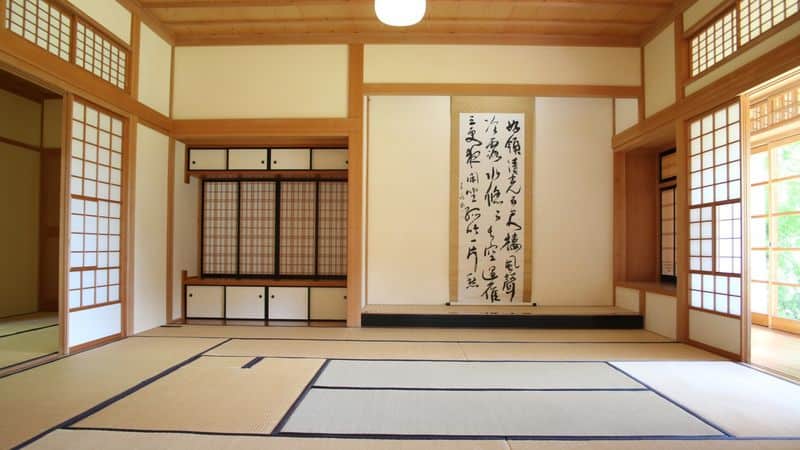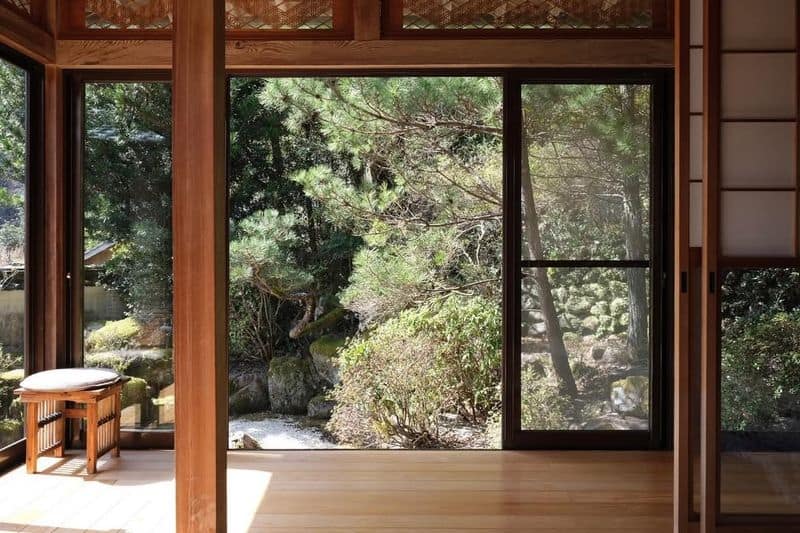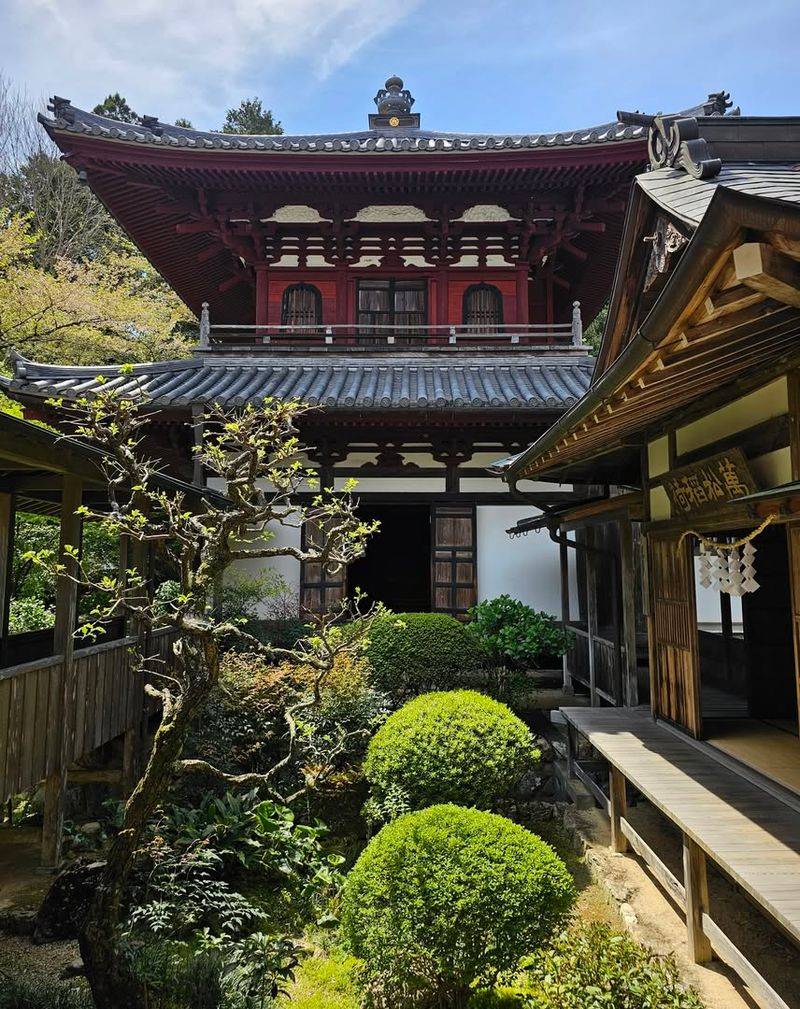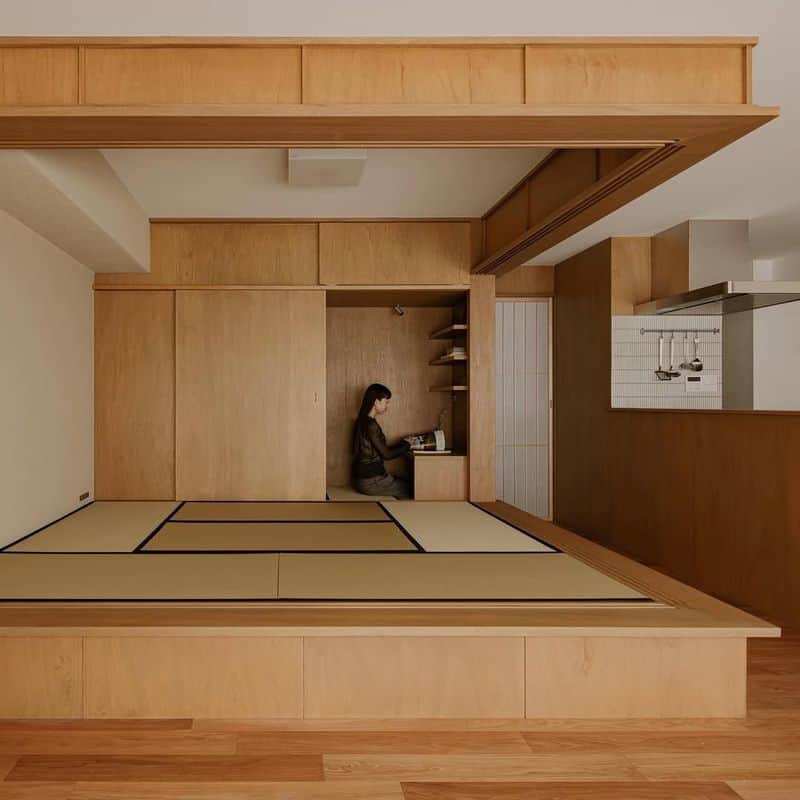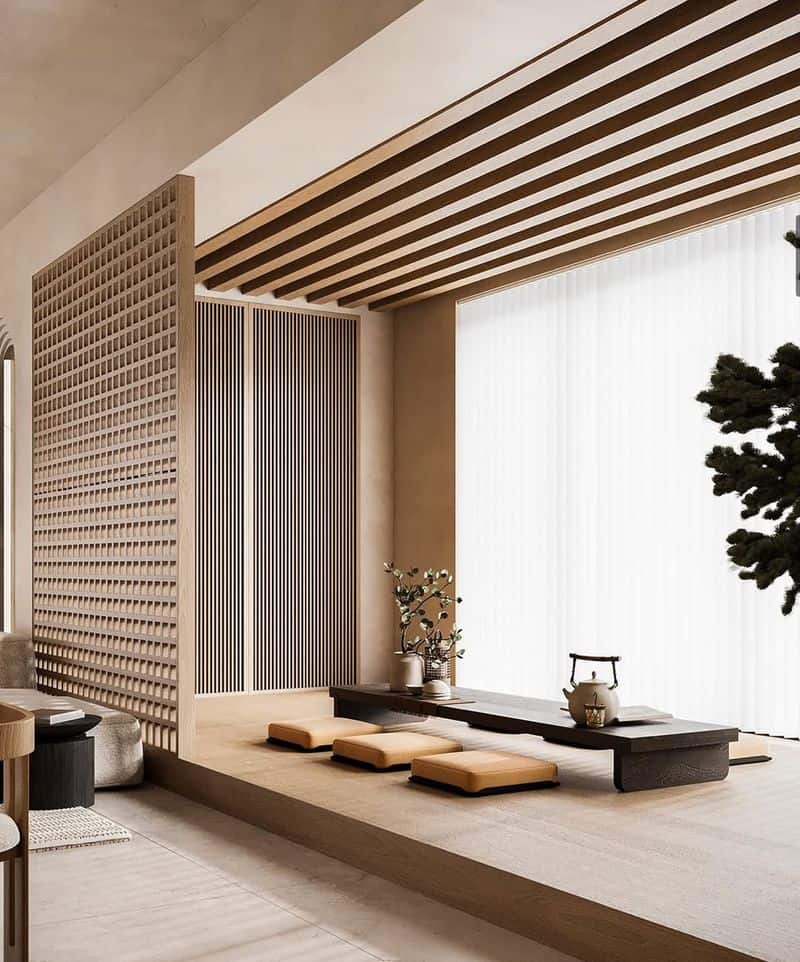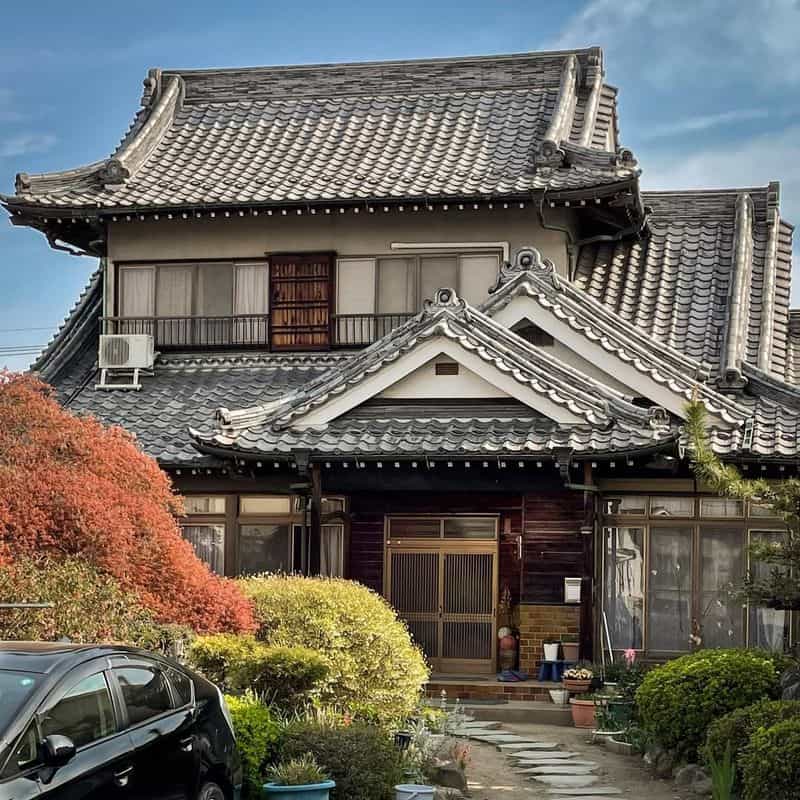Traditional Japanese architecture is renowned for its unique aesthetic and functional elements, each contributing to a harmonious living environment.
This article explores 10 iconic features that define this architectural style, blending nature, simplicity, and elegance.
1. Use of Wood as the Primary Building Material
Wood, the backbone of Japanese architecture, whispers stories of resilience and warmth. Cherry blossoms aside, the real romance is in the wooden beams that support these structures.
The love affair with wood is not just about looks—it’s about enduring character.
Intricate joinery is preferred over nails, as wood expands and contracts with the changing seasons. The natural grain of timber is celebrated, not concealed, allowing the building to breathe with nature.
This marriage of form and function creates a living structure that ages gracefully, much like a bottle of fine sake.
2. Curved, Sloping Roofs
Curved, sloping roofs are the crowns of Japanese buildings, designed to keep the rain at bay while adding a touch of the divine.
These elegant curves, reminiscent of a samurai’s sword, allow snow to slide off gracefully.
The roofs are often adorned with ornate tiles that tell tales of ancient craftsmanship. Beneath these sweeping arcs lies a commitment to both practicality and beauty.
The visual drama created by these roofs is not just for show; it reflects a deep appreciation for the natural elements, embracing both form and function with a poetic flourish.
3. Sliding Doors (Fusuma) and Shoji Screens
Sliding doors, or fusuma, and shoji screens are the ninjas of interior design—stealthy, efficient, and always ready to transform a space.
These elements define Japanese interiors, providing flexibility and privacy without the fuss.
Light filters through shoji screens with a gentle glow, creating a serene atmosphere. Fusuma, with their delicate paper covering, glide effortlessly to reveal or conceal spaces.
This minimalistic approach fosters a fluidity in living spaces, where boundaries are more of a suggestion than a rule. Functionality and beauty, hand in hand, dancing silently across tatami floors.
4. Tatami Flooring
Tatami mats are more than just flooring; they’re a lifestyle choice, offering a soft whisper of nostalgia with every step.
Made from woven straw, these mats provide a natural, breathable surface that keeps homes cool in summer and warm in winter.
Tatami defines room sizes in Japan, traditionally measured by the number of mats. The texture underfoot is a comforting embrace, while the subtle scent of straw invites relaxation.
Sitting, sleeping, or simply existing on tatami brings a sense of grounding—a tactile connection to a long-standing cultural tradition.
5. Engawa (Veranda)
The engawa is more than just a veranda; it’s a bridge between worlds, inviting nature to be part of the home.
Positioned between the indoors and outdoors, it serves as a stage for contemplation and connection.
Sliding doors open to reveal the garden, a living painting that changes with the seasons. The engawa offers a space for tea, conversation, or quiet reflection, wrapped in the gentle embrace of natural light.
It’s a liminal space that blurs boundaries, encouraging harmony between human habitation and the natural world.
6. Connection with Nature
In Japanese architecture, nature isn’t just a backdrop—it’s a co-star, always ready for its close-up. Homes are designed to embrace the natural world, with gardens and interiors in a seamless dialogue.
Koi ponds, stone lanterns, and bonsai trees are curated with care, creating a living symphony of sights and sounds. Large windows and sliding doors frame these elements, inviting the outside in.
This philosophy celebrates seasons and the impermanence of life, fostering a deep appreciation for the beauty in the everyday, an ever-changing masterpiece.
7. Modular Room Layouts
Modular room layouts are the shape-shifters of Japanese homes, adapting to the needs of the moment.
Thanks to fusuma doors and tatami mats, a single space can morph from a living room to a bedroom with ease.
This flexibility allows for efficient use of space, reflecting a cultural emphasis on simplicity and utility. The clean lines and uncluttered surfaces foster an atmosphere of peace and clarity.
This architectural strategy is a testament to the Japanese art of minimalism, where less is truly more and every element has its place and purpose.
8. Raised Wooden Floors
Raised wooden floors are not just a design choice; they’re a nod to practicality, offering protection from moisture and pests. Elevated on sturdy beams, these floors encourage airflow and stability.
The sensation of walking on these floors is akin to a gentle massage, with the wood’s natural give and spring. This elevation also provides a subtle insulation, offering comfort throughout the year.
The beauty lies in the craftsmanship, where the wood’s natural grain is showcased and celebrated, a testament to the enduring elegance of traditional techniques.
9. Minimalist Aesthetic
Minimalism in Japanese architecture is an art form, stripping away the unnecessary to reveal the essence of beauty. This aesthetic focuses on clean lines, neutral colors, and natural materials.
Spaces are designed to be uncluttered, allowing the mind to breathe and the spirit to rest. The use of light and shadow plays a crucial role, enhancing the simplicity and elegance of the design.
This approach fosters a sense of calm and clarity, where every element is intentional, and less truly means more—a quiet rebellion against the chaos of modern life.
10. Ornate Roof Decorations
Ornate roof decorations are the artful flourishes atop Japanese buildings, where myth and craftsmanship meet.
These adornments include mythical creatures, like dragons and phoenixes, each with symbolic meanings.
These decorations not only protect but also elevate the roof’s aesthetic, tracing the sky with intricate carvings and shimmering tiles. The detailed craftsmanship reflects a dedication to artistry and tradition.
Each roof tells a story, a narrative carved in wood and tile that weaves cultural heritage into the everyday, a reminder of the rich tapestry of Japanese history.

